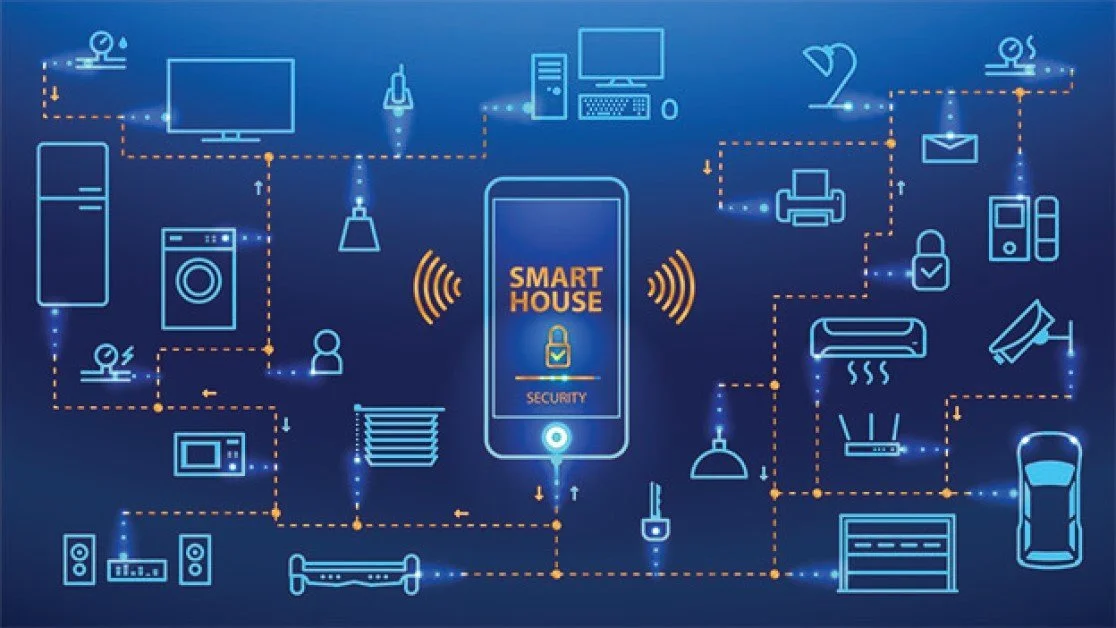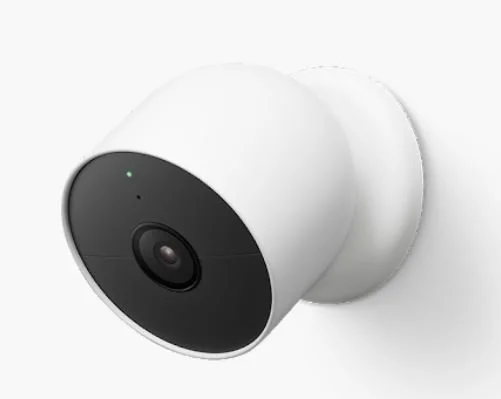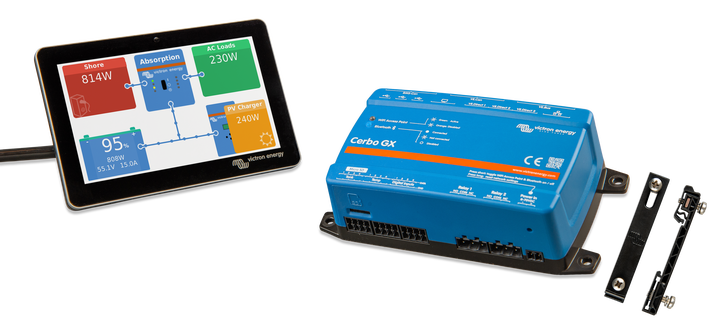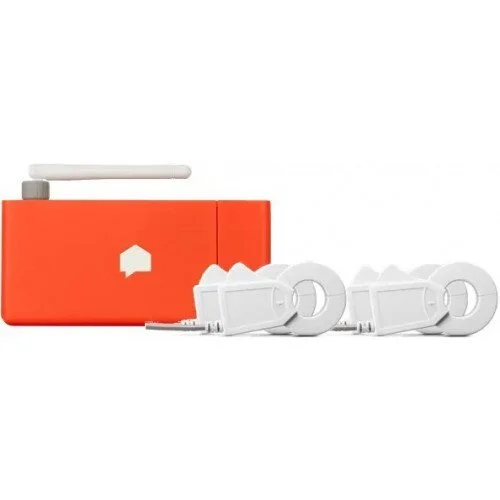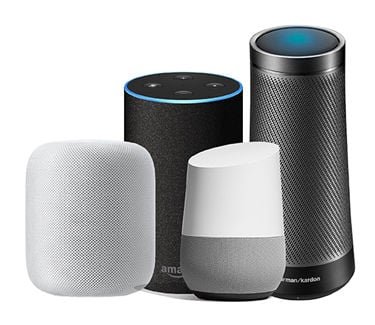TINY OFF-GRID “SMART” HOUSE
Image courtesy of Unite AI
Smart house technology can be an asset when used in a Tiny Off-Grid House to optimize energy efficiency, for convenience and security. Smart house devices such as a: smart phone, smart watch, tablet, smart speaker, tricorder, or computer enable users to receive “information” to remotely monitor and control residential operations; with the convenience of automation.
A perceived concern with smart house devices is the amount of power they consume; even while in standby mode. Although power is consumed 24/7 the ability of smart devices to gather operational information on the house, maintain security and enable energy savings created through the operational efficiency of the house mitigates any negligible energy consumed.
Google Nest Learning thermostat can be programed to automatically maintain your desired indoor heating and cooling preferences in response to occupancy or changes in indoor temperatures.
Image courtesy of Google Store
The Nest Camera provides 24/7 monitoring with time-lapse HD 1080P HDR video recordings with a 130° diagonal field of view. The length of viewing history depends on your Nest cloud subscription storage plan.
Other features include: night vision with HDR, motion sensor, with digital zoom, that can distinguish between animals or humans. Once activated, a notification is sent to your smart device. Other features is a two-way radio which enables remote conversation through your smart device.
Nest Protect 2nd Generation Smoke and Carbon Monoxide (CO) Detector can send alerts through WiFi to a smart phone. The Nest Protect uses an advanced photoelectric sensor called Split - Spectrum which is capable of detecting discreet smoldering fires. Silent self checks of the battery and sensors are made several hundred times a day. The sensor system is intelligent enough to distinguish between smoke and steam. Also, sensitive enough to identify a small fire before it becomes a roaring fire. Besides a visual alert with flashing light, an audible alert in a “calm” voice announces smoke or CO alerts.
The Smoke and Carbon Monoxide (CO) Detector works in concert (Wireless interconnection) with its Nest siblings: thermostat and smart light switches . . . If a fire is detected from one Nest smoke and carbon monoxide detector the others will also alarm and tell the thermostat to shutdown the ventilation; instruct the lights to turn a specified color & repeatedly turn on/off to notify the hearing impaired.
NOTE: The National Fire Protection Agency (NFPA) 70 recommends that all brands of sealed battery smoke detectors be replaced at 10 years from date of manufacture; since the sensor performance degrades with time.
NOTE: Although the U.S. National Electrical Code (NEC) does not require smoke detectors to be hard wired however, it is practical to hard wire smoke detectors on the lights circuit. It may not be obvious to identify when a smoe detector on a dedicated circuit breaker trips or is turned off. Also, the lights circuit does not consume a large amount of amperage to trip a circuit breaker that’s shared with a smoke detector. Please check with your local regulatory agency.
Image courtesy of Victron Energy
The Victron Energy Cerbo GX paired with the Color Control GX Touch 70 seven inch touch screen display monitors and manages the off-grid photovoltaic (PV) system, Lithium battery bank and peripherals; along with the fresh & grey water tanks levels and temperature. Remote access through a smart phone can be accompished using the Victron Remote Management (VRM) portal.
Image courtesy of Sense
The Sense Home Energy Monitor can track the energy usage of most residential appliances. The monitor has two Current Transformers that are clamped around each main electrical panel 120 Volt service conductors (L1 & L2) with the power lines from the monitor connected to a 15 Amp double pole circuit breaker and the neutral bar. An external WiFi antenna extends out of any 1/2” knockouts on the main electrical panel to transmit data for remote monitoring of the electrical loads; with no monthly service plan or fee.
The Sense Energy Monitor searches for the unique electrical signature of your appliances stored in its cloud base library; along with the help of similar electrical signals already identified from other users.
Smart appliances can communicate directly to a cellphone or with voice commands through a central portal device / hub (Smart Speaker) where the user can communicate with all the smart devices; like the communication between an Air Traffic Controller and Pilots.
Image courtesy of Inside Radio
Smart devices communicate with the user remotely through the internet on a wireless network in the form of WiFi or Bluetooth. WiFi can transmit large amounts of data quickly. While Bluetooth is best used if the user is in proximity of the smart devices.
Even if a house is off-grid some form of wireless internet connection will be needed to remotely communicate the smart devices beyond the range of Bluetooth to the users mobile cellphone or tablet . . .
Image courtesy of Starlink
SpaceX’s Starlink 2nd Generation Satellite Internet Service uses a ground or rooftop mounted 19” x 12” antenna (User terminal). With clear visible access to the sky, it uses motorized self orientation to find signals from Space X satellites. Space Exploration Holdings, LLC (dba: SpaceX) has thousands of low Earth non-geostationary orbit (NGSO) satellites designed, in the words of Elon Musk, “to be the primary means of long-distance internet traffic and serve people in sparsely populated areas.”
The constellation of NGSO satellites orbit 750 miles above the Earth (U.S. Government considers an altitude of 50 miles the edge of space); eventually more than 43,000 will orbit the Earth in different tiers. This makes the satellites appear to move fast in space at 17,500 mph. Conventional satellites are positioned 22,000 miles above the Earth in a geosynchronous (GSO) Earth centered orbit that matches the Earths rotational spin on its axis; giving the appearance from the Earth that the satellites are stationary.
The main advantage of NGSO is communication signals have to travel less distances; reducing latency. Space X’s target latency is 15 - 20 mili seconds. Also, light travels 40% faster in the vacuum of space than in terrestrial fiber optics. Conventional satellites rely on terrestrial routers and fiber optic networks to move signals. Starlink uses a phased array user terminal dish (aka Dishy) that sends/receives signals up to NGSO where it bounces from one satellite to another as they travel over the terrestrial signal source.
Motors pitch & yaw the dish to sync with orbiting Starlink satellites only during initial setup. The dish contains @1280 aperture coupled patch antennas arranged in a honeycomb phased array. The antenna array steers signals to orbiting Starlink satellites that travel through the zone above the stationary dish; without the aid of motors. In contrast, television (TV) satellite dish can only receive TV signals.
The 2nd gen Starlink Standard version uses 100 - 240 Volts AC, 50 - 75 Watts idle, 4.5 - 5 Amps, at 50 - 60 Hz. Its manual / automatic Snow Melt feature, up to 1.5”/Hr (40mm/Hr), prevents snow and ice accumulation on the top of the dish that can impact performance. There is no dedicated resistive heater, the electronics inside just become more active generating more heat. It has been reported the Snow Melt feature increases power consumption >90 Ws.
Inaddition to the initial purchase of the equipment, a monthly service plan is required for its stationary Residential plan, mobile Roam (Formerly known as RV) and Maritime . . . plans.
Image courtesy of weBoost
Unlike Starlink, which gets its signal from satellites up in space, a signal booster uses an antenna to obtain signals from ground base cellular towers. A weBoost Destination RV Signal Booster Kit, Model 470159, has an outside directional antenna when aimed in the direction of a cellular signal tower can provide “stationary” wireless access to the internet. The directional antenna signal is amplified by the inside Booster. “The boosted signal is then broadcast by the Inside Panel Antenna to multiple smart devices.” For greater clearance, a 25 ft telescoping pole is included which the directional antenna can mount on. Compared to an “omnidirectional” antenna, the directional will not get distracted between two competing cell tower signals and focus all its gain, on a radius of 45 to 90 degrees, on the single strongest cellular signal source selected. This has an advantage in rural areas where WiFi signal towers are spread further apart than in the cities where they are more numerous. Numerous apps are available to identify the location of cellular signal towers. Power consumption is only 4.5 VDC. The aerodynamic design of the directional antenna does not appear to accumulate snow or ice which can impact performance.
According to weBoost, their Destination RV Signal Booster “works with every network including, 5G, on any US carrier network including Verizon, T-Mobile, AT&T, T Mobile & USCellular.” Besides the initial purchase of the equipment a subscription plan to a internet provider of your choice is necessary.
Ethernet cables provide both power and data connection for smart devices to the internet (Cloud) or a reliable local bluetooth connection . Smart devices controlled over WiFi is convenient but still not as fast or reliable as a Power Over Ethernet (POE) connection; plus, only one ethernet cable is needed for both power and data. If connection is lost, the smart devices will stil be able to function through POE connection. The internet ethernet cable is connected to a multi port Switch / Server which provides internet connection through connected ethernet cables to their respective smart devices..
Both the Starlink & weBoost performances can be impacted by obstructing terrains; such as a thick tree canopy or mountains; respectively. Clearance is essential for both systems.
In residential or business areas with high data congestion, a Starlink non residential or RV plan may experience deprioritization and may experience temporary slower speeds—not to be confused with a data cap. Conventional residential users will get priority data usage during times of high data congestion. Cellular phone and internet providers perform a similar “network management” when their customers exceed their allotted allowance of data and subsequently, experience throttling of their service data speed.
The main attribute of Smart House technology is the collection & use of information or data; with subsequent benefits being residential operational efficiency. Information on energy consumption can identify vampire appliances or even faulty machinery in need of repair that is consuming more energy than necessary. Smart House technology can learn the house occupancy schedule to automatically regulate environmental temperatures. We hope future Smart house technological advances will continue to benefit those with disabilities and the elderly to live a more independent and productive life. Yet, there maybe individuals whom desire a pure Off-Grid experience and cautiously shun what some may consider a dependency on technology that is eroding our privacy.
* Trade names and images are used for information purposes only. No endorsement is intended, nor is criticism implied of similar products not named.
Please share your thoughts or experiences in the Comments section below.
